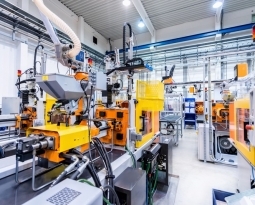“The future is all electric” – General Motors announces a lineup of electric cars by 2023
Auto industry leader General Motors announced yesterday that it aims to introduce a lineup of 20 electric cars by 2023 with two electric models to appear on the market within 18 months. Mark Reuss, GM’s Executive Vice President of Global Product Development, Purchasing, and Supply Chain, said, “General Motors believes the future is all electric.”
The announcement follows a growing pattern in the auto industry where other major players like Volvo, Jaguar Land Rover, and Mazda are committing to electric cars. Volkswagen and Audi likewise shifted their focus from diesel to electric. This trend is fuelled in part by several countries’ decision to ban internal combustion engines powered by diesel and gas in the future. Countries include China, India, and the United Kingdom.
GM’s lineup will include a broad array of vehicles, from pure electric-powered cars to hybrids and even vehicles using hydrogen-fuel-cell technologies. Traditionally, hybrids with their gasoline-powered engines and electric batteries have demonstrated a safe option to break into the fuel-efficient market. Hydrogen-fuel-cell power, in contrast, poses a greater market risk. This technology involves converting compressed hydrogen into energy and releases only water vapor as waste. However, major improvements to existing infrastructure is needed before hydrogen-powered cars can enter mainstream use. Currently, only California, particularly in Los Angeles and the Bay area, has the infrastructure to maintain hydrogen cars.
Despite controversy surrounding hydrogen power, GM has been working on a hydrogen cell battery since 2015 and hopes to begin production by 2020. Building on its Chevy Bolt electric car technology, GM recently introduced the Silent Utility Rover Universal Superstructure (SURUS). The SURUS is a hydrogen powered vehicle with a four-wheel drive that runs on two electric motors. GM hopes the SURUS will be used as delivery trucks and even ambulances in the future. There is still of course, room for improvement. As Reuss told The Verge, “Whatever we do, from an electrification stand point, the next version will be better than the version we have on the road.”
Are you experimenting with prototyping different electric and hydrogen powered vehicles? You could be eligible for the R&D tax credit even if you haven’t begun production yet. To find out more on the R&D tax credit, please contact a Swanson Reed R&D Specialist today.
Swanson Reed regularly hosts free webinars and provides free IRS CE credits as well as CPE credits for CPA’s. For more information please visit us at www.swansonreed.com/webinars or contact your usual Swanson Reed representative.

















